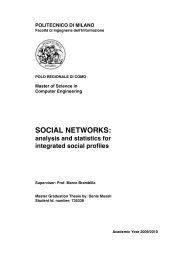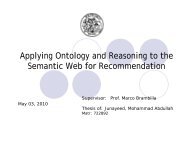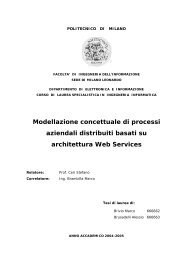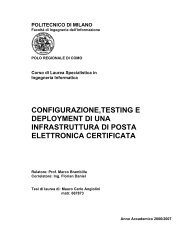Thesis full text PDF - Politecnico di Milano
Thesis full text PDF - Politecnico di Milano
Thesis full text PDF - Politecnico di Milano
Create successful ePaper yourself
Turn your PDF publications into a flip-book with our unique Google optimized e-Paper software.
4. MVC-WebFlow model4.1. IntroductionWeb Engineering has proven a valid approach to the design and implementation of Webapplications. A lot of approaches and notations exist to increase efficiency, reuse, reliability, andmaintainability. Unfortunately, these approaches are not as widely adopted as one could expect.One of the reasons is that they are often too far away from the average developer and designerway of working. This becomes more and more evident in application development where time tomarket and continuous update are crucial. Indeed, in these scenarios CMS systems and predesignedsolutions are often preferred. Their main advantage is that most of the updates can beapplied <strong>di</strong>rectly at runtime, simply by updating the data or the metadata that describe theapplication content and structure. Unfortunately, this cuts off any design abstractions in thedevelopment process, with several <strong>di</strong>sadvantages in terms of overall design quality andcleanness of the application structure. Some interme<strong>di</strong>ate solutions have been proposed, that tryto provide some design help while developing the application (e.g., see App2You, where datamodel and business logic are built at runtime while the designer adds contents and pages to theapplication [http://app2you.com]), but they still lack a modeling phase of the application.With this project we want to offer a simple conceptual model which allows developers to managethe application structure exploiting the MVC architecture. To ease the task, we offer an onlinetool called MVC-Webflow for drawing the data and application structure and turning thespecification to a running application on the fly. Using the tool the developer is able to define theflow of the application, the view composed by the JSP pages and the controller which process theuser requests and acts as interme<strong>di</strong>ary between the business logic and the view. The tool willprovide the possibility to e<strong>di</strong>t each component to define the view of the application and thecontroller. The tool is implemented on the AJAX platform, for granting maximum usability an<strong>di</strong>nterface quality.4.2. Aims and benefitsThe main purpose of the MVC-Webflow tool is to lower the barrier to the adoption of WebEngineering techniques in the development practices. This aim is addressed by the followingbasic choices: We allow to model applications with a MVC approach adapted for the Web (namely, theModel 2 design framework), which is widely adopted by developers and has some vali<strong>di</strong>mplementation counterparts (e.g., Jakarta Struts);32


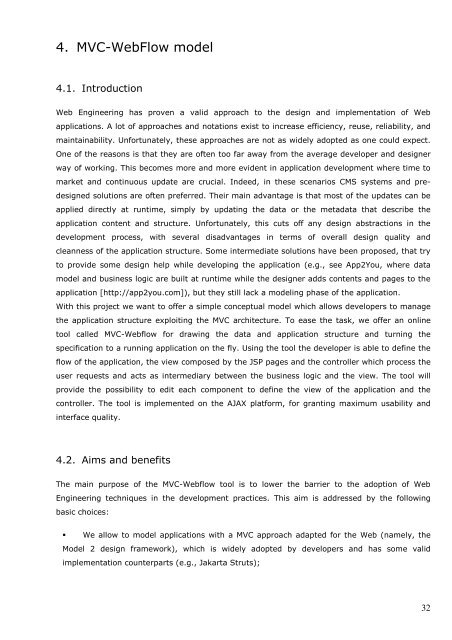
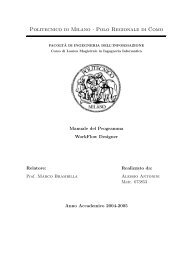
![Full text preview of the chapter [PDF] - Politecnico di Milano](https://img.yumpu.com/44021924/1/180x260/full-text-preview-of-the-chapter-pdf-politecnico-di-milano.jpg?quality=85)
